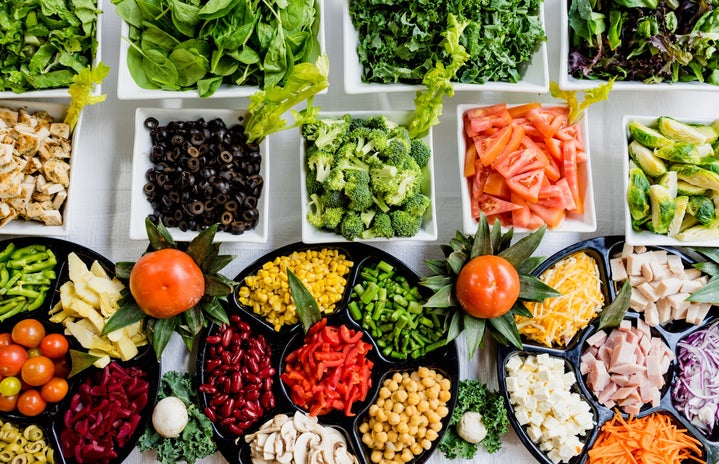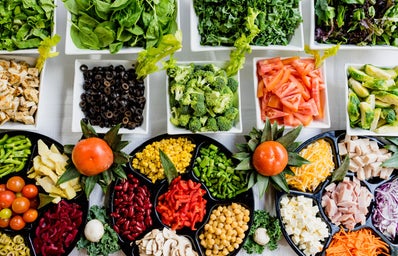Alright, now we’re getting into actual cooking!
This week, we are going to cook pasta! I’ll also show you some variations to spice things up and how to cook pasta in a microwave as well!
Before each variety, I will put a list of ingredients and what you’ll need. However, for every recipe, you will still need these basic ingredients and materials.
Ingredients
- Pasta
- Salt
- Water
Cooking Materials
- A pot
- A strainer of some kind
- A stirring implement
How to Boil Pasta (Plain, Sticky, No Frills)
First, look at the packaging. Are there specific cooking directions? Are there any prep work things you need to do beforehand? Find that out and make sure to save the box. Also, if making a longer pasta, such as a linguine, check that your pasta will fit the pot you’re using. Don’t be afraid to break pasta to make it fit. For the pasta I’m making, there are no directions, so we’ll blaze on ahead!
Next, put salt in the pot. This sounds silly, but by adding salt to the water, it will make the water boil faster. Not to mention that it also seasons your noodles and gives them a flavor boost! Make sure to not over-salt the water though; you can always add more!
Next, fill the pot with water and turn on the heat.
A suggestion: If you want the water to boil even faster, place a lid on the pot to trap any heat that might escape.
Do not add the pasta to water until it has reached a rolling boil. You will know that it’s a rolling boil when you can see the convection occurring (bubbles moving from the bottom of the pot to the surface and then back down again). There will also be a large amount of steam coming off of the surface of the water.
Add pasta to the pot away from you. If it is still too long, don’t worry; once the pasta starts to cook, it will melt in.
Stir pasta once it starts to cook and make sure all noodles are submerged.
Let cook according to directions or for about ten minutes for most types of pasta. Or, if you have no way to do a timer, wait until the pasta looks like this (See picture below). Again, seeing the convection in action. Or, if you still aren’t sure, take a sample and eat it. Only that will be the definitive way to tell how your pasta is done.
Drain the pasta. Pour away from you and make sure that your sink is clean before you drain pasta into it.
Return pasta to pot.
Here’s where it gets fun!
We’ll cover three different varieties: simple and light, traditional, and mac and cheese.
Simple and Light: Olive Oil, Basil, and Garlic
Ingredients:
- Olive Oil
- Basil
- Garlic Salt or Powder
- Cooked Pasta
Okay, let’s assume that you’ve made pasta as directed above. First, add olive oil.
… I added too much oil.
Add basil and garlic for taste.
Mix up. You’re done! A light, easy recipe that can accompany any dish.
Traditional Olive Garden-esque Pasta (Tomato sauce)
Ingredients
- Cooked Pasta
- Sauce
- Butter/Olive Oil, whichever pairs best with your sauce
Put sauce in the pasta.
Make sure to turn up the heat and make sure the pasta heats up evenly with the sauce. If you are adding some kind of meat to the sauce, you would want to add the pasta later and allow the meat to cook in the sauce.
And done! You could also add oil to the pasta as needed if the sauce doesn’t work well enough with the pasta.
Alright, this one is more labor intensive and you need to remain focused on this one.
Mac and Cheese Noodles
Ingredients
- Cheese (I recommend American cheese or a blend of cheddar and mozzarella)
- Milk
- Butter
- Cooked Pasta
First step, throw the cheese and butter and milk in together with the pasta.
Turn on the heat and stir until the ingredients are fully mixed together. Keep stirring as the cheese melts to prevent burning or scalding the sauce.
Keep stirring until the sauce reaches a consistency you like or it starts to thicken up. Add pasta as needed to affect the balance if you made too much sauce!
And there you have it! Easier and cheaper than throwing a hunk of overpriced Velveeta into the pot and calling it a day!
Thanks for reading all the way to the end of the article! Next week, I will be covering a requested recipe: beef stew!
If you’d like to see a recipe featured here, please fill out this survey! I read every response and take every suggestion into account when trying to make this series better!


